Table of Contents
With the passing of every Mardi-Grass, we are left with the lasting impression that it truly *is* the cannabis capital of Australia… but that doesn’t make it any less easy to get well and truly lost in the small town of Nimbin in Northern New South Wales.
Unsure of the ins and outs of this strange hippie paradise? Well, look no further: The F.A.B Nimbin Survival Guide is for you!

The History of Nimbin
Nimbin town’s history is one of particular intrigue. Writer Austin Pick was once quoted saying:
It is as if a smoky avenue of Amsterdam has been placed in the middle of the mountains behind frontier-style building facades … Nimbin is a strange place indeed.
We at F.A.B concur.
Perhaps no other town in Australia is shrouded in such a thick haze of mystery. Tightly wrapped in the lush hills of Lismore shire, Nimbin today is a haven for potheads, activists, environmentalists, indigenous people, old-school hippies, miscreants, and more. It’s a rag-tag group of outcasts, rejects and social misfits. Dairy produce, marijuana, ecologically sustainable practices and indigenous wisdoms have been Nimbin’s prime exports for the last century. Yet, it’s Nimbin’s relative cultural and geographic isolation from the rest of Australia that has ensured its survival as a countercultural institution into the 21st century.
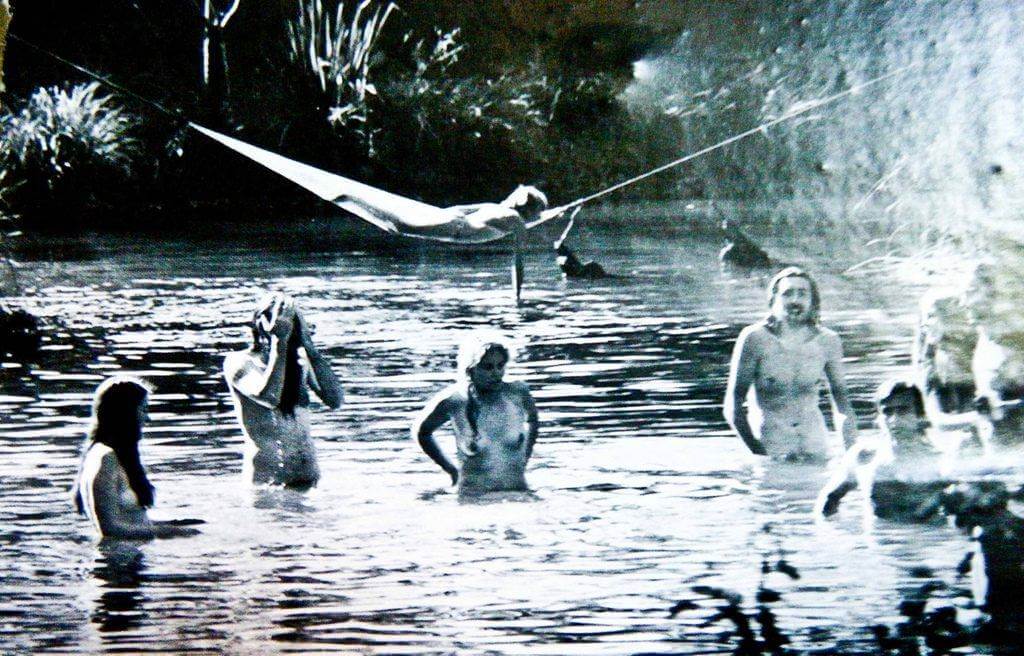
Nimbin hasn’t always been such a radical village. Once a tight-knit dairy farming community, the region only evolved into one of Australia’s most renowned bastions of psychedelia, ecology and cannabis during the early 1970’s. Before Nimbin was even a dairy community, however, the town and its surrounds were of significant spiritual importance to first Australians. The name ‘Nimbin’ comes from the local Whiyabul (Widgibal) clan. Their dreamtime speaks of the Nimbinjee spirit people protecting the land. The area is also affectionately known as the ‘Rainbow Region’ by the Bundjalung people. The indigenous people knew it best: there’s something purely magical about this place.
The first European settlers arrived sometime during the 1840’s. Initially, the region had attracted a large number of loggers, in lieu of its dense vegetation and abundance of red cedar. By the 1900s, most of the valuable trees around Nimbin had been cleared, leading to the subdivision of the land. Queue the dairy farmers!
Not so fast, though. This reign of cows would not last forever. The recession of the 1960s saw the dairy industry collapse, paving the way for a whole new group of artists, trippers, uni-students, hippies and “party people” to enter the scene. This “first wave” of Nimbin-ites brought us the Aquarius Festival in 1973, which is historically renowned as the first festival in Australia to seek approval from the Traditional Owners of the land.
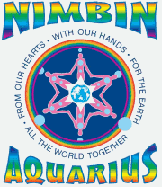
A similarly relevant historical landmark was the 1979 ‘Battle for Terania Creek’, where the community of Nimbin staged huge protests to protect their local rainforest. They were so successful that the New South Wales government imposed a ‘no rainforest logging’ policy; not only for Nimbin, but for the entirety of the state. This was one of the first pieces of legislation to protect native forestry in the world, ever.
It’s this remarkably diverse tapestry of people, forming a rich and detailed history, that distinctively makes Nimbin the place it is today: a vibrant, multifaceted town, bristling with sparkling individuals, each promoting a message of love and light.
And yet . . . something is amiss. Continue with us, as we delve into the sinister underbelly of Nimbin; and reveal to you:
The Dark Side of Nimbin
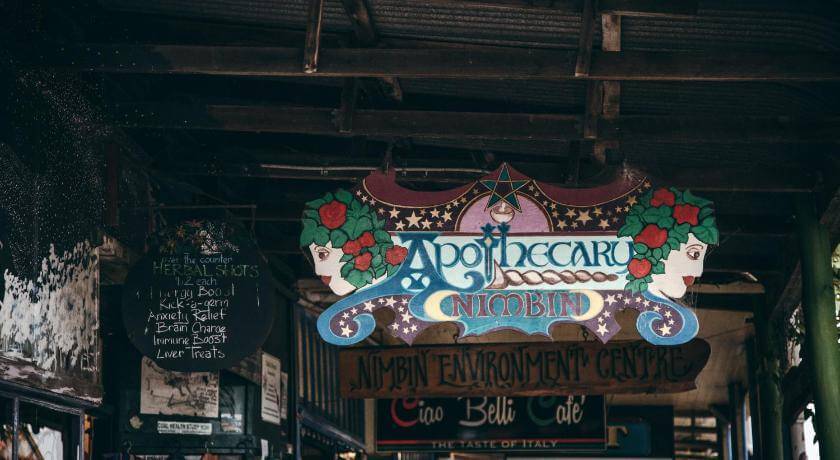
As the sun sets on the town of Nimbin, swarms of cannabis-conscious tourists and Euro-backpackers board the buses trickling back to their hostels in Byron Bay and the Gold Coast. As the night sets in, locals scurry off for dinner… and a distinctly different vibe begins to stir in the air. Violent shouts of aggression replace the tranquility of the streets in the daytime
No mistake should be made here: there is an edge to the town. A local Nimbin-ite assured us that “whoever thinks of Nimbin as a quiet little hippy village is very much fuckin’ wrong”.
It only takes around half an hour. The typical hippie spirit of the town evaporates, leaving behind a gruesome display of cruelty and excess. One can practically watch as felt hats are swapped out for neck tats. It’s hard to believe that only hours ago, the only worry was a few kooky hippies getting cooked in a laneway. Now, those same sidestreets sported troves of crack addled criminals, all tweaking off their proverbial rockers.
Half an hour is all we need. The shadows have emerged. Now, we can truly appreciate the dark side of Nimbin.
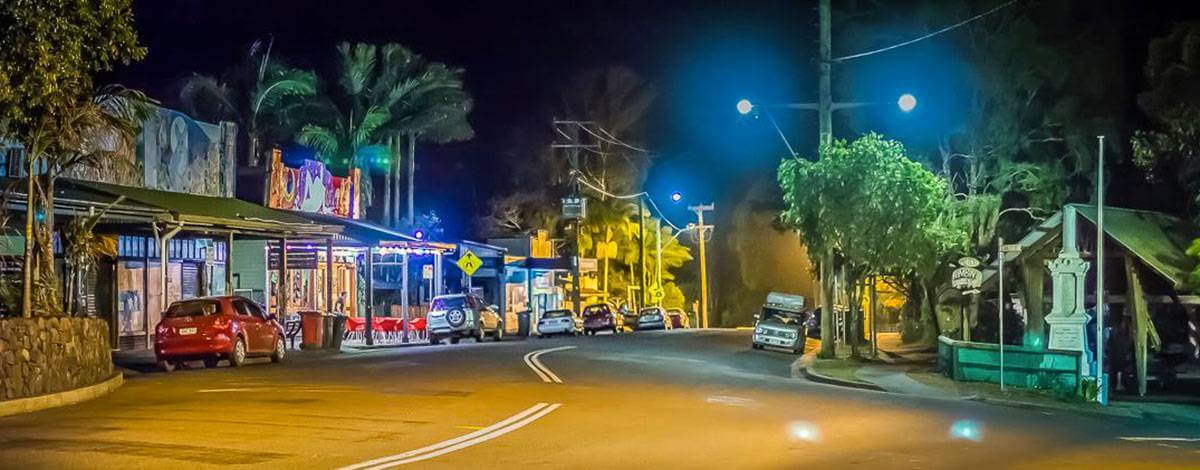
See… during the 1970’s and into the 1990’s, Nimbin struggled with a ‘civil war’ of sorts. Heroin found its way into the scene. The people of Nimbin – known for their radical propensity towards activism – fought back. While police and local government continued to make small and rather pointless arrests, the locals of Nimbin town would struggle – and eventually succeed – in eliminating heroin from their streets.
Ironically, as soon as Nimbin had accomplished this, an even darker affliction arrived on their doorstep. Their current problems with crime, along with the general atmosphere of the town at night, can be traced down to a common culprit. Methamphetamine, for nearly 20 years, has been the bane of the town’s existence. Much like last time, a ragtag group of renegades form ‘the resistance’, leading a town wide effort against the imported meth and the people it brings.
A massive police sting a few years back has contributed to the mayhem Nimbin is currently experiencing. The arrest of a group of Nimbin locals known as ‘The Lane Boys’ would lead to a marked shift in the character of the community. They were called the ‘Lane Boys’ because they would always be found dealing in the alleyways, right under the cops’ noses. Truthfully, they were the first line of defence the town had against organised crime syndicates and external threats.
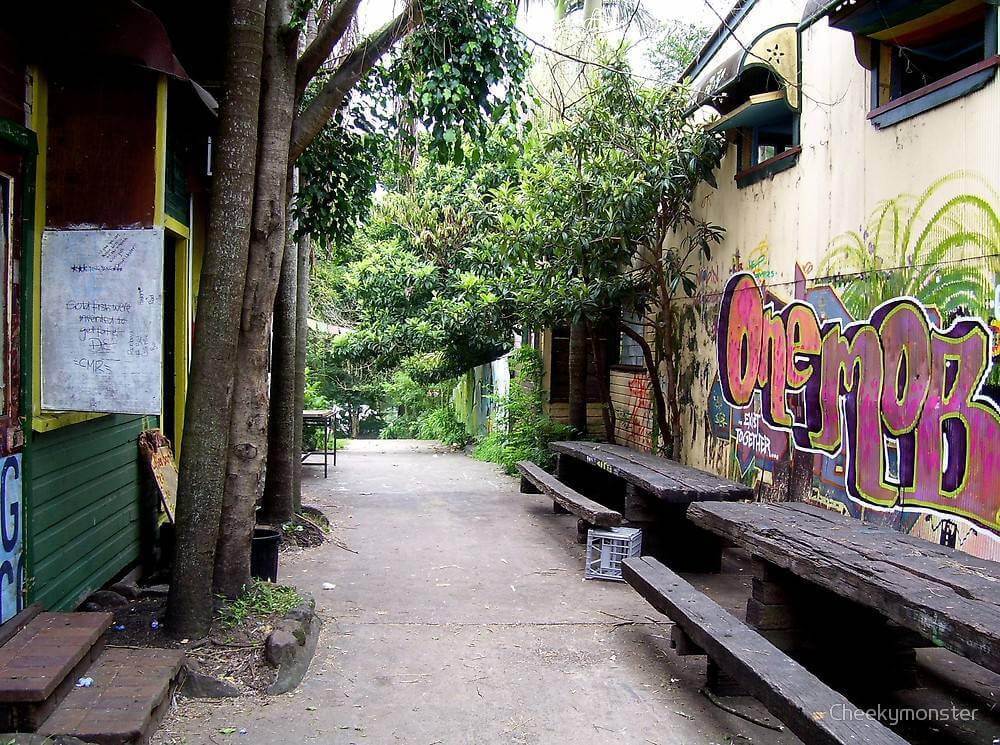
Now that the ‘Lane Boys’ are mostly locked up, or out of the game for fear of being imprisoned, nothing stood between random crackheads and the tourists making their pilgrimage to Nimbin. Enter a new age of Nimbin; where there is profit to be made, and not much else matters.
I wish I was exaggerating. Personally, this writer has experienced being chased through Nimbin at 3 a.m. by someone who a local described to me as: “the scarface of Nimbin”. A sentiment I had laughed at, until…several hours later. We were running from a man with speed dealer glasses and neck tattoos. He was swinging a metal bar over his head, screaming at the top of his lungs: “WHO THE FUCK IS THESE CUNTS?!?”
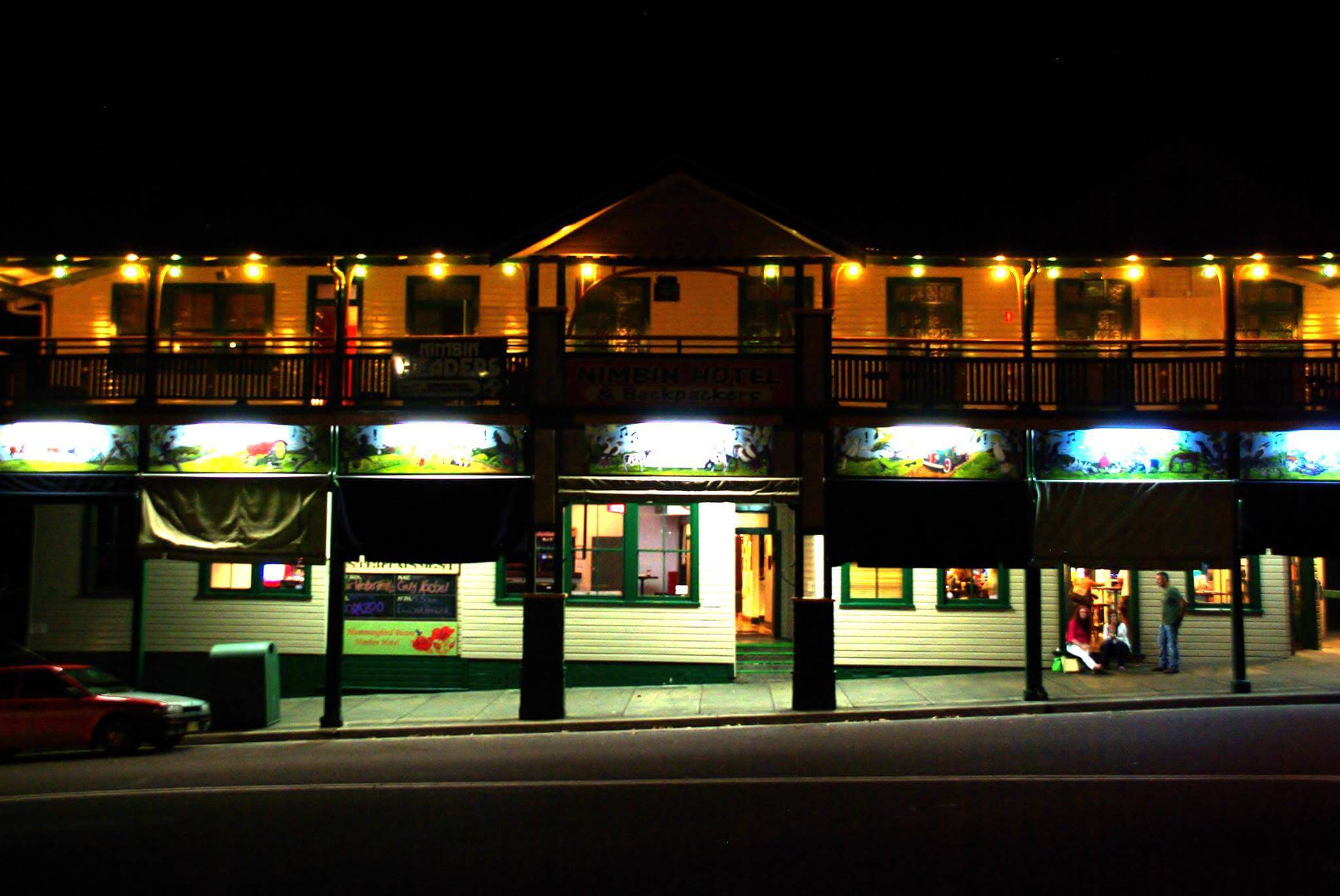
Luckily… our local guide, a man named Fish (an apt name for someone as suspicious as he was), “had it sorted” and was able to diffuse the situation. This was the first experience I had in Nimbin which stood contrary to its usually colourful, weedy ambiance; an experience that would make me truly appreciate the diverse, dialectical nature of a town known for its ‘peace loving ethos’.
Getting on in Nimbin
In a town famed for its legendary status as a hemp haven, the process of “getting bent sideways” can be surprisingly complicated. Police used to practically leave the people of Nimbin alone; but, as the town has gained notoriety, the police presence has become increasingly aggressive. Most rural towns of the same size generally have around 1-3 full-time police officers. A local estimated that Nimbin has closer to 10.

Sitting and smoking joints in the morning outside of The Oasis Café, we watched the same police van drive past eight times in the span of an hour. Someone pointed out to me several light poles in town which are supposedly cameras. “They’ve got near the whole town under surveillance”, said one café owner. I was also told they take notes of who sits where, what bag someone has, and who is talking to who. Literally anything and everything is recorded.
It can be easy to forget that cannabis is illegal in Nimbin… but with a police presence four times stronger than any other similar township, and with a force whose operating procedures look more like something out of 1984 than state or federal law, it’s no wonder that finding a buddy on the scene with the buds that are green is often much easier said than done.
The following are some tips and tricks to help with the acquisition of quality ganja in Nimbin:
- The Hemp Embassy is often able to help out. They’re more than likely to know someone stocking some locally grown bush weed. The bud can often be cheaper and better quality than dealers on the street. If there have been a lot of police stings recently, The Hemp Embassy may not help you… they got hit just before Mardi Grass this year, so be careful.
- Anyone who looks like a crack head… probably is one. If the person trying to sell to you seems aggressive, ‘on edge’, or tries to pass off low-quality weed – steer clear. Anyone who looks like a mud Gollum – is probably best to leave alone. These drug addled dickwits can become overly aggressive if you are seen to be wasting their time. These will be the people in Nimbin who will rip you off without a second thought by selling underweight, overpriced, low-quality greens.
- The Aboriginal brothers who you can often find near the skate park generally won’t do you the dodgy. These indigenous fellas have been around forever – most of them were born and raised in Nimbin. This writer has never had problems before . . . during Nimbin Mardi Grass (one of the hardest times to get on in Nimbin), some Murray dudes helped hook us up when no one else would.
- The Oasis Café is the best place to hang out. Forget their rather limited selection of food and beverages – sit around at The Oasis long enough and you mightn’t even need to buy any weed. This is the unofficial meeting place of Nimbin. It helps to make an effort to actually connect with people in Nimbin . . . act a tourist, get treated like one. If those working the café can’t get you on – they know who can, without a doubt.
- Do NOT expect to find weed at The Nimbin Mardi Grass Festival. Not only is the festival the perfect opportunity for cannabis enthusiasts and activists alike to show their true colours . . . but also the police! Who better to pacific a group of radical peace lovers than the entirety of the NSW riot squadron? Nearly no one wants to be seen selling during Mardi Grass. With undercover police crawling through town in the dozens and the roads in and out of town blocked with police breathalyzer and swab tests . . . it really is a weird time to get on in Nimbin.
Which brings us to the final installment of our Nimbin Survival Guide…
The Nimbin Mardi Grass Festival
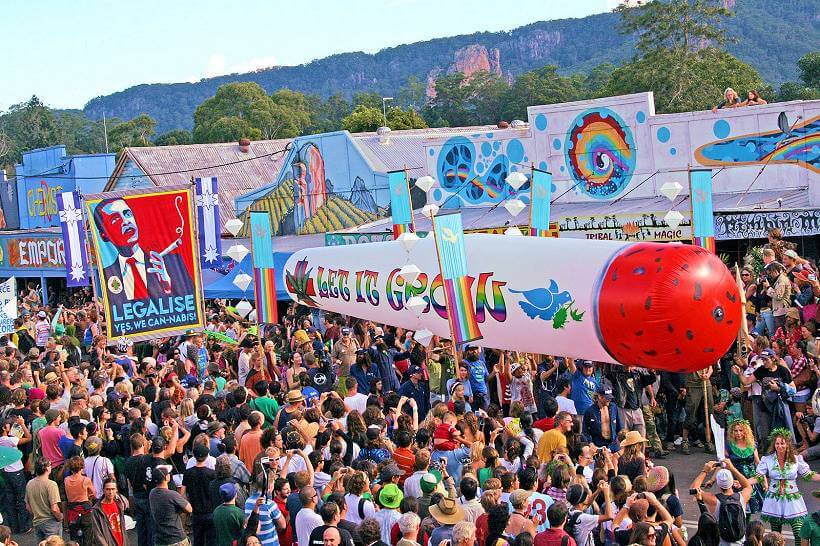
The Nimbin MardiGrass is an annual rally & celebration in the tiny village of Nimbin in northern NSW, Australia. Beginning in 1993, MardiGrass is held to protest the drug laws, educate people on the various uses of cannabis (medicinal, industrial, recreational & spiritual) and to celebrate the culture that has grown here over the last 40 years. Our mission is to bring about change with as much fun as possible.
Once a year, the famous (or infamous, depending on who you ask) MardiGrass Festival is held in Nimbin. Since its inception in 1993, MardiGrass has been a gold standard of sorts for marijuana activists.
As one approaches Nimbin during the MardiGrass weekend, the air is a little hazier than usual. The town is at absolute capacity. For three days – spanning from Friday to Sunday – Nimbin is at its busiest. Ironically, the town known for its over-surplus of pot can be increasingly difficult to find weed in its busiest weekend. As we’ve touched on in the last section of this guide, this can be attributed to an intoxicating police presence. Whilst it’s not impossible to get on . . . we highly recommend sourcing your own herbs before the festival. If you have the time to kill: head in on the Wednesday or Thursday before the festival. You’ll be able to secure a decent camping spot – and some dope.

Whilst the organisers are by no means averse to a chill vibe, they very clearly state their intentions for the event:
MardiGrass will become a Festival when we can celebrate the herb without fear of prosecution and persecution. When the Police Riot Squad have a float in the street parade behind the Ganja Faeries, Big Joint & POLITE, then we really will have a proper celebration. In the meantime, this annual event is a POLITICAL PROTEST RALLY.
During the day, you’ll be able to enjoy a carnival-type experience – with all the shops and cafes pumping. There are several venues – including the ‘Indica Arena’ and ‘Magic Garden Market’ – that require an armband to attend. Armbands can go for $55 AUD for the whole weekend, which isn’t too crippling. However, there’s plenty to do for free, if you’re like many of the poor backpackers and tourists attending the festival.

An onslaught of renegade sound systems spring up as the sun goes down. Everything from techno, to psytrance, to dub and house can be heard. These renegade parties are generally all free. They’re usually held along the high street, or in the town’s parks. Additionally, a “bush doof” or two are usually kicking over the Mardi Grass weekend, though these events usually happen further out in the forest. They’re mainly run on a close-knit, need-to-know basis.
You probably won’t have to leave town to find something that interests you, though. There is a march for reefer reform, a hemp fashion show, comedy shows, fire performers, The Great Green Cabaret, and even a “Kombi Konvoy”.
The MardiGrass is, in this writer’s humble opinion, probably the best time to check out Nimbin. It truly is one of the more whimsical festivals taking place in Australia today, irrespective of whether or not you’re a choofer. As the Australian people move further in the direction of legalisation, there has never been a more pertinent time for Australia’s first – and largest – rally for cannabis law reform.

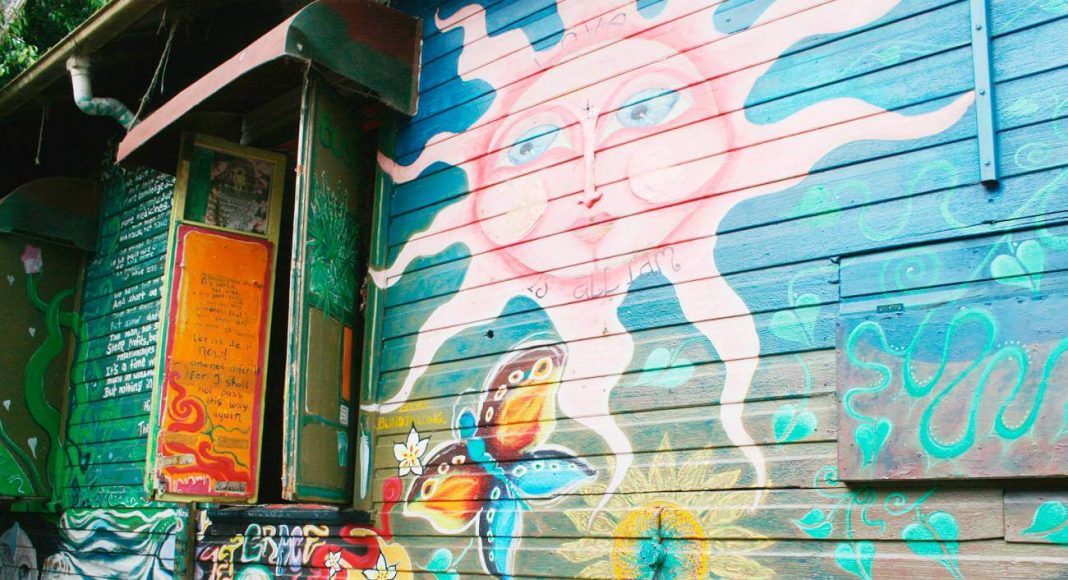

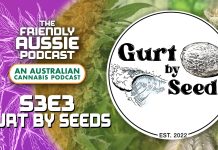
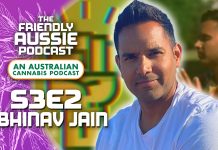







Great article mate